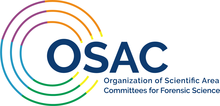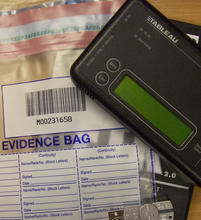October 2019
Bulletin Summary
This Bulletin provides an update on forensic science standards that are moving through the Registry Approval Process at the Organization of Scientific Area Committees (OSAC) for Forensic Science and those that are moving through the development process at standards developing organizations (SDOs).
New Standards Placed on the OSAC Registry: Three (3) documents
OSAC Registry Standards Open for Comment: One (1) document
SDO Documents Open for Comment: Fourteen (14) documents
Please consider providing comments on documents that are open for comment.
OSAC Registry News
The OSAC Registry serves as a trusted repository of high-quality, science-based standards and guidelines for forensic science practice. A document included on the Registry has progressed through the formal SDO process and has been published as a standard. OSAC elevates standards to the OSAC Registry as an endorsement of the document’s high quality and to encourage its adoption by relevant stakeholders in the forensic science community.
New Documents on the OSAC Registry
OSAC is excited to announce the following three documents have been placed on the OSAC Registry:

ASTM E3115-17 Standard Guide for Capturing Facial Images for Use with Facial Recognition Systems (Facial Identification Subcommittee; effective October 1, 2019)

ASTM E3148-18 Standard Guide for Postmortem Facial Image Capture (Facial Identification Subcommittee; effective October 1, 2019)

ASB Technical Report 025, Crime Scene/Death Investigation – Dogs and Sensors – Terms and Definitions, First Edition, 2017 (Dogs & Sensors Subcommittee; effective October 1, 2019)
Intent to Add to the OSAC Registry - Items Open for Comment
OSAC is currently seeking feedback on whether the following standards should be included on the OSAC Registry:
- ISO 21043-2 Forensic Sciences – Part 2: Recognition, recording, collecting, transport and storage of items. Submit your comments by 11:59 PM ET on October 4, 2019. To view the document, please follow the instructions in the comment link.
Standards Moving through the OSAC Registry Approval Process
The following standards have moved from one step in the OSAC Registry Approval Process to another during the last month:
Document in Appeals Phase:
- ANSI/ASB 037, Best Practice Recommendation, Guidelines for Opinions and Testimony in Forensic Toxicology, First Edition, 2019
- ASTM E2917-19a Standard Practice for Forensic Science Practitioner Training, Continuing Education, and Professional Development Programs
For a list of standards currently under consideration, please visit the OSAC website.
If your organization is on the “tip of the spear” and has already embraced the Registry implementation efforts, let us know! Please email mark.stolorow [at] nist.gov (mark[dot]stolorow[at]nist[dot]gov) to share what Registry Standards your organization has implemented.
SDO News
New or Revised Standards
ASTM International (developed by Committee E30.01):
- ASTM E2882 Standard Guide for Analysis of Clandestine Drug Laboratory Evidence has been revised to E2882-19.
American Academy of Forensic Science Standards Board (ASB):
- ANSI/ASB Best Practice Recommendation 021, Best Practices for the Preparation of Test Impressions from Footwear and Tires, First Edition, 2019 has been published and provides forensic footwear and tire impression examiners guidance in the preparation of two and three-dimensional test impressions from known footwear and tires for use in the comparison process.
Comment Period Open on Draft Documents
ASB:
- ASB 030, Standard for a Quality Assurance Program in Bloodstain Pattern Analysis. This document provides requirements for establishing and maintaining a documented quality assurance program in bloodstain pattern analysis to forensic service providers. Comment deadline October 7, 2019.
- Recirculation* – ASB 038, Standard for Internal Validation of Forensic DNA Analysis Methods. This document details the general requirements for performing an internal validation of all forensic DNA analysis methods within a forensic DNA laboratory. Comment deadline October 14, 2019.
- ASB 077, Standard for the Developmental and Internal Validation of Forensic Serological Methods. This document provides requirements for developmental and internal validations of forensic serological methods to evaluate body fluids, stains, or residues related to forensic investigations. Comment deadline October 14, 2019.
- Recirculation* – ASB 089, Best Practice Recommendation for Facial Approximation in Forensic Anthropology. This document provides guidance for facial approximation from skeletal remains. Comment deadline October 14, 2019.
- ASB 105, Minimum Education Requirements for Firearm and Toolmark Examiner Trainees. This document provides the minimum education requirements for forensic laboratory applicants and employees entering a training program in firearm and toolmark examination. Comment deadline October 14, 2019.
- ASB 095, Standard for the Minimum Qualifications and Training for a Footwear/Tirewear Forensic Science Service Provider. This new document describes the minimum qualifications and is an outline for training for a footwear/tirewear forensic science service provider with little to no experience or previous training. Comment deadline October 21, 2019.
- ASB 119, Standard for the Analytical Scope and Sensitivity of Forensic Toxicology Testing for Medicolegal Death Investigations. This new document describes the minimum requirements for target analytes and analytical sensitivity for the toxicology testing of blood specimens in medicolegal death investigations. Comment deadline October 21, 2019.
- ASB 120, Standard for the Analytical Scope and Sensitivity of Forensic Toxicology Testing in Impaired Driving Investigations. This standard outlines the minimum requirements for target analytes and analytical sensitivity for the toxicological testing of blood and urine specimens collected from drivers suspected of being impaired. Comment deadline October 21, 2019.
- ASB 121, Standard for the Analytical Scope and Sensitivity of Forensic Toxicology Urine Testing in Drug-Facilitated Crime Investigations. This new document describes the minimum requirements for target analytes and analytical sensitivity for the toxicological testing of urine specimens collected from alleged victims of drug-facilitated crimes. Comment deadline October 21, 2019.
- Recirculation* – ASB 031, Guidelines for Report Writing in Bloodstain Pattern Analysis. This new document provides guidelines for report writing in bloodstain pattern analysis. In addition, guidance is provided regarding statements to be avoided in the report. Comment deadline November 11, 2019.
- ASB Technical Report 084, Presentation of Canine Detection Evidence in Court. This technical report provides information and guidance pertaining to presenting canine detection evidence in court. It includes an overview of issues to consider and a resource of relevant case law to assist the lawyer and expert witness in the presentation of evidence in court. Comment deadline November 11, 2019.
- ASB 117, Standard for Examination of Stamping Devices and Stamp Impressions. This new standard provides procedures to be used by forensic document examiners for forensic examinations and comparisons involving stamp impressions (often referred to as rubber stamp impressions) and stamping devices. Comment deadline November 11, 2019.
For the ASB documents listed above, please download the comment template and return it to asb [at] aafs.org (asb[at]aafs[dot]org) by the comment deadline.
*Please note that comments on a re-circulation will only be accepted on revised sections of a document, comments made to text not revised from the original comment period will not be accepted.
ASTM:
- WK56743 Practice for Training in the Forensic Examination of Hair by Microscopy. Comment deadline October 20, 2019.
- WK65067 Guide for Assessment of Gas Chromatography and Electron Ionization Mass Spectrometry Data During the Qualitative Analysis of Seized Drugs. Comment deadline October 20, 2019.
New Work Proposals for New or Revised Standards
ASB:
- On September 20, 2019, a Project Initiation Notification System (PINS) was published on page 17 in the ANSI Standards Action. This will begin a 30-day period for public comment on the initiation of ASB’s work on the following document:
- BSR/ASB Std 013-201x, Standard for Friction Ridge Examination Conclusions. This new standard defines terms and establishes qualitative expressions for the range of conclusions that may be reached following friction ridge comparisons.
- On September 27, 2019, a PINS was published on page 19 in the ANSI Standards Action. This will begin a 30-day comment period for public comment on the initiation of ASB’s work on the following documents:
- BSR/ASB Std 130-201x, Standard for Training in Forensic DNA Amplification Methods for Capillary Electrophoresis Sequencing. This new standard provides the general requirements for a forensic DNA laboratory’s training program in forensic DNA amplification methods for capillary electrophoresis (CE) sequencing. This standard applies to forensic human and wildlife mitochondrial DNA amplification and wildlife nuclear DNA amplification.
- BSR/ASB Std 131-201x, Standard for Training in Forensic DNA Sequencing using Capillary Electrophoresis. This new standard provides the general requirements for a forensic DNA laboratory’s training program in forensic DNA sequencing using capillary electrophoresis. This standard applies to forensic human and wildlife mitochondrial DNA amplification and wildlife nuclear DNA amplification.
ASTM:
- WK69872 Standard Guide for Crime Scene Photography
- WK69919 Standard Practice for Forensic Science Practitioner Training, Continuing Education, and Professional Development Programs is a work item revision to existing standard E2917-19a.
- WK7008 Standard Practice for Education and Training of Seized-Drug Analysts is a work item revision to existing standard E2326-14.
- WK70035 Practice for Determination and Comparison of Color by Visual Observation in Forensic Soil Examination
- WK70036 Standard Practice for Gunshot Residue Analysis by Scanning Electron Microscopy/Energy Dispersive X-Ray Spectrometry is a work item revision to existing standard E1588-17.
Other News

The National Institute of Standards and Technology (NIST) has announced plans to update OSAC in ways that will streamline the production of forensic science standards. An overview of the proposed changes can be found on the NIST website. While some details are still under review, new OSAC 2.0 organization will officially launch October 1, 2020.


On November 12, join the American Association for the Advancement of Science (AAAS), the Innocence Project and NIST, in collaboration with the National Academies of Science, Engineering and Medicine (NASEM), for a conference commemorating the 10th anniversary of the NASEM report “Strengthening Forensic Science in the United States: A Path Forward,”. Featured sessions will address developments over the past decade in the forensic sciences and in the courts, as well as in federal agencies and in laboratories. Visit the event page to register and learn about new information as it becomes available.
Learn More About OSAC
Visit the OSAC website to learn more about OSAC, how you can help participate in the development of standards for the forensic science community, and other NIST Forensic Science topics.

